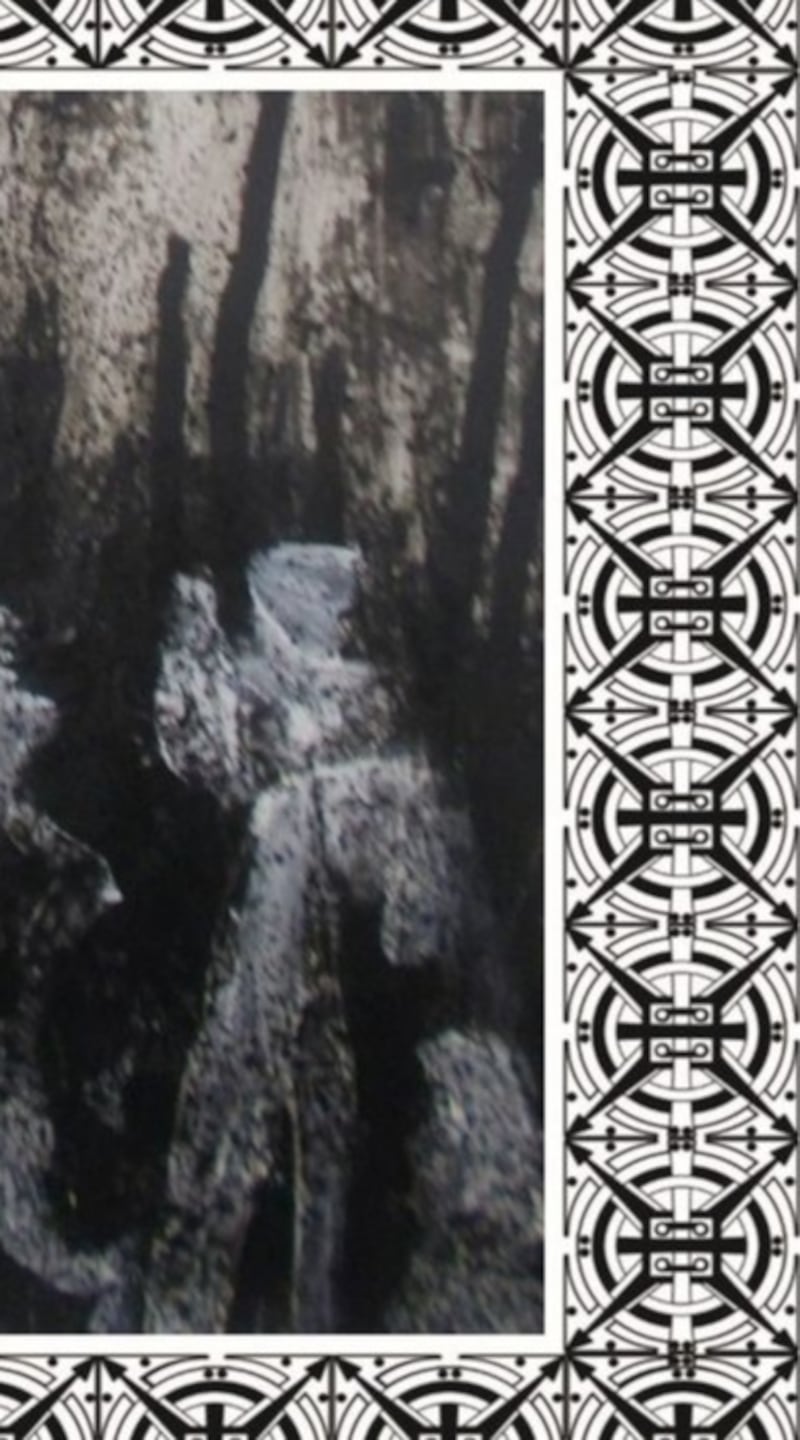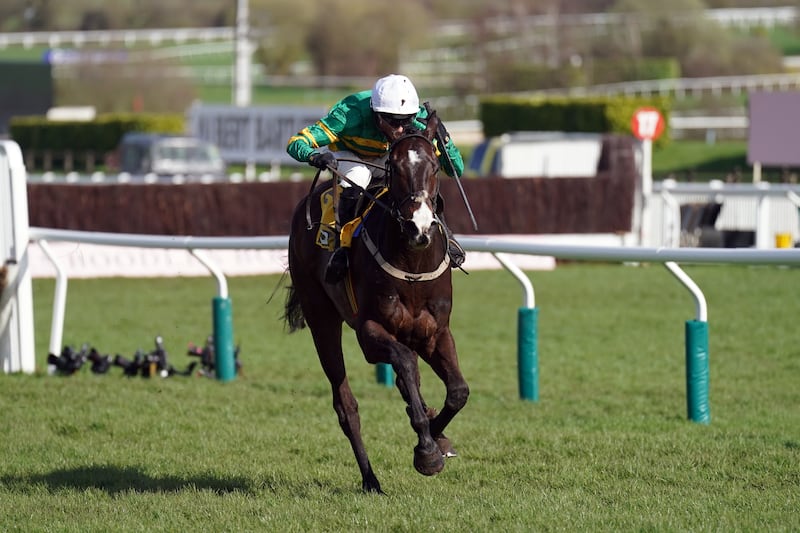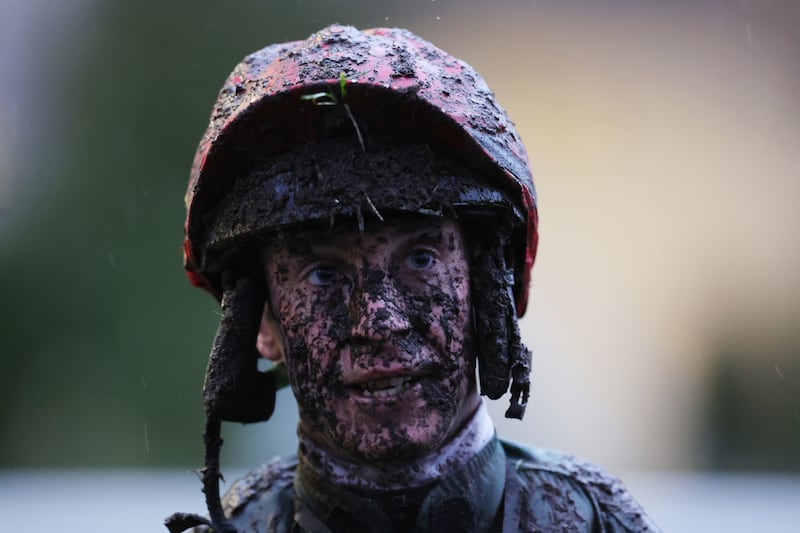Over the centuries many folklorists and storytellers such as Seamus MacManus, Francis McPolin, Henry Glassie, Patrick Kennedy, William Butler Yeats, Sinead De Valera, Eileen O’Faolain, Ruth Sawyer, Michael J Murphy, Sean O’Sullivan, William Carleton, Katherine Briggs and Eddie Lenihan (to name only a very few) are like butterfly collectors searching for stories of Ireland’s mystical people, The Sidhe or Shee, better known as the fairy folk or the Fey. Only they set them free again for others to go and find them again for themselves.
As the storyteller Eddie Lenihan told us when we asked him about collecting stories: “These stories are not yours or mine, they belong to the people who were kind enough to tell them to me, while they were still able to. I in turn regard it as my duty to share them with others. Through this process, hopefully, the stories will live on.”

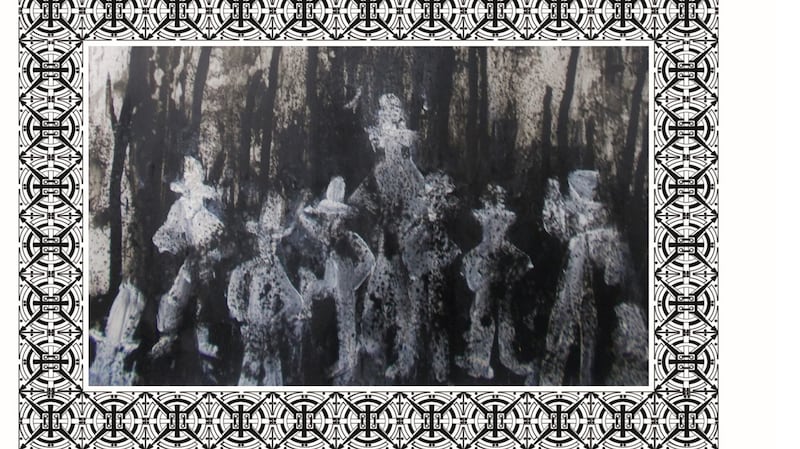
These enigmatic creatures go under many names such as The Good Folk, The Wee Folk, The Gentle People, The Fey and even The Other Crowd. The term Fairies is merely an Anglicisation for something that cannot be defined or pigeon-holed, just like the Sidhe themselves.
But the fairies of Ireland are not the magical or elaborate fairies that we know from stories such as Cinderella or Peter Pan or the paintings created by Victorian and Edwardian artists such as Richard Dadd and Edward Robert Hughes or the photographs of the Cottingley Fairies taken by Elsie Wright and Frances Griffiths during the reign of King George V, nor are they the delicate sweet fairies we see in a Disney film.
The Sidhe lend themselves more to the imaginings of Edgar Allan Poe, HP Lovecraft, Harry Clarke, Sheridan Le Fanu and Bram Stoker, hence the title of our book, Irish Gothic.
In fact Stoker, an Irishman born in Clontarf, Dublin in 1847, listened to many strange and disturbing stories about the Great Famine and the Good Folk from his dear mother. It was such stories that helped create the literary landscape for Stoker’s 1897 masterpiece Dracula.
It was believed that the Famine was indeed caused by the Sidhe. According to folklore historian Simon Young: “There was the belief among some Irish potato growers that it was the fairies’ disfavour that brought down the blight on the land. Fairy battles in the sky – fairy tribes both fought and played hurling matches against each other – were interpreted as marking the onset of the famine: a victorious fairy army would curse the potatoes of the enemy’s territory.”
The one question that I always asked while interviewing folk about the Sidhe was and still is "What do they look like?"
We both came from storytelling backgrounds. I grew up listening to my grandmother from Galway tell me stories about the Good Folk and she was also a huge fan of the Hammer Horror franchise. This fascination with the sublime and the strange stayed with me throughout my life in the literature, film, visual arts and even music that I loved. As a teenager I was fascinated with the Gothic Rock sub-culture of the late 1970s and early 1980s with bands such as Bauhaus who wrote a song dedicated to the Sidhe entitled Hollow Hills. The Virgin Prunes from Dublin were an androgynous and bizarre otherworldly group that emulated the mystery, beauty and horror of the Sidhe and then there was Siouxsie who literally incorporated the Sidhe into her own realm with the Banshees.
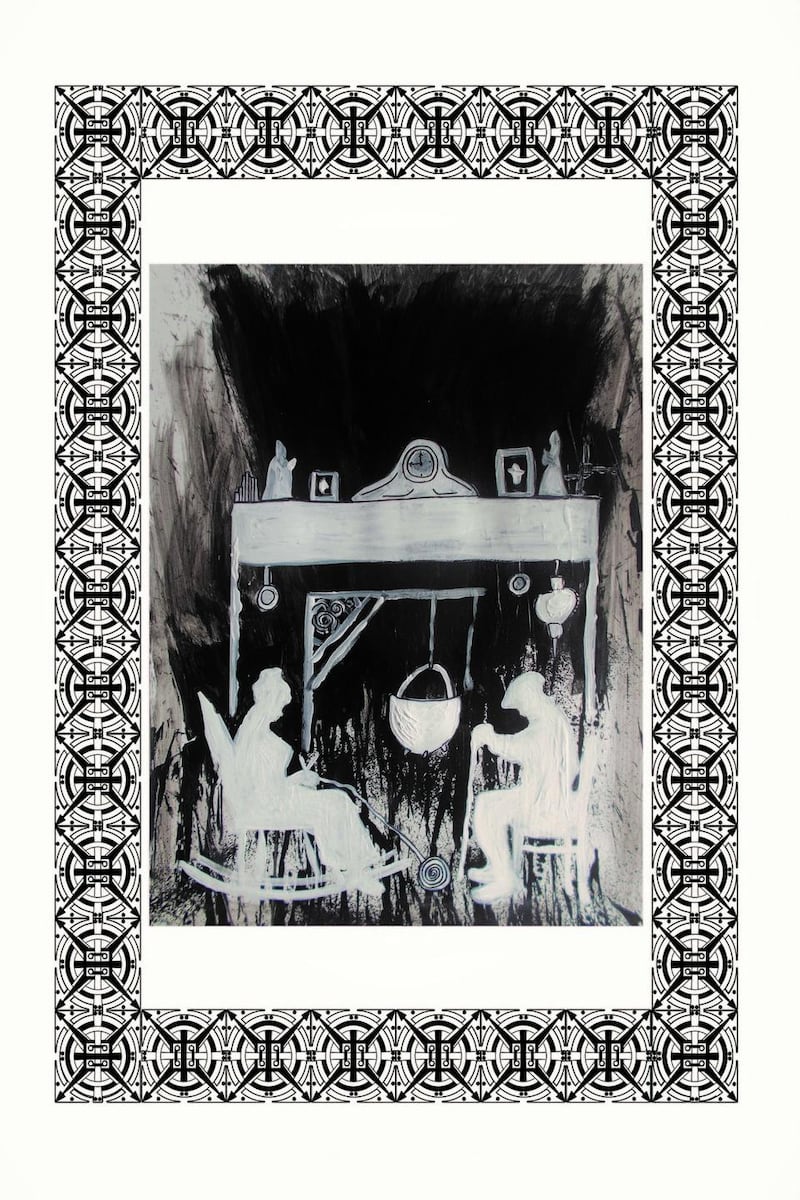
These artists along with many others from the genre were the soundtrack to my life at a time when I was living in a very remote and rural part of Co Kildare surrounded by ancient castles, forts and folklore. Their music still resonates with me today.
I have written three books already on folklore, Down Folk Tales (2013), Kildare Folk Tales (2014) and Monaghan Folk Tales (2017). The research gave me a great insight into folklore, folk tradition and of course the Sidhe. This is my first collaboration and I felt Paula was a good choice for she helped me research Monaghan Folk Tales and she comes from a magical place and is a true believer in the fairy folk.
The one question that I always asked while interviewing folk about the Sidhe was and still is “What do they look like?”
Some people have told me the fairies are just “Wee folk”, who seldom grew more than three feet tall, but resembled ordinary human beings in every other way. Their clothing was old-fashioned and their features were plain, more ugly than handsome. Others have said that they look just like us and one could be standing beside you and you wouldn’t know, but there is a strange look in their eyes that gives them away. Some have said that they are beautiful beyond belief and when you see them your life will never be the same. I have heard tell of them being terrible monsters and creatures from your wildest nightmares. Many folk believe that the fairies are fallen angels that had nowhere to go for they could neither enter Heaven or Hell and we can’t see them at all.
I have spoken with many people old and young who experienced first-hand the mischievous ways of the fairy folk. Some have been trapped in fields for hours and days and some have been tormented after cutting a bush or a tree, but what I have found is that most people, whether they believe in fairies or not, both respect and fear them in equal measure and don’t tempt fate by interfering with what they feel is fairy property.
The folklorist Francis McPolin was struck by the strong hold that these folk and fairy stories had on the imagination of most of the older generation during the 1940s. He stated that he found that at least a third of those over 60 years of age were proud and professed believers in The Little People. He also found that about half of the remainder believed in fairies but were not open about their beliefs.
McPolin documented a story dating back to the mid-1800s, told by an old-timer known as Blind Dan, explaining that the fairies were a group of fallen angels, who had repented after being cast out of Heaven just in time before they reached Hell. So they were partly restored by God and allowed to take up residence below the earth.
Most of them lived in underground caves with secret entrances into the fairy forts, which can still be seen in varying states of ruin and preservation on most of the hillsides in the surrounding countryside. It’s believed that there was a definite hierarchy or aristocracy among the fairies and these nobles lived in underground palaces that could only be entered via the larger forts which stood upon the higher hilltops.
The general consensus is that the fairy-world is composed of the original fairy people known as the Tuatha De Dannan or The People of the Goddess Danu. According to the Armagh folklorist Michael J Murphy these were an early Irish race who were skilled in magic and able to escape the physical death of mortal man. They were, however, compelled to dwell in fairy forts or rassans. They entertained themselves by showing off their superiority over ordinary people by playing tricks on them. This tended to take place on certain times such as May 1st and October 31st, Halloween, when the ethereal wall between the human world and the fairy world is at its thinnest.
If you are lost in a fairy fort or fairy ring you take your coat off, put it back on inside out...
On these dates humans were carried off or abducted by the fairies and kept in fairyland permanently. These humans are known as changelings. To protect themselves from such abductions, Murphy stated that the old people would place iron tongs across a cradle. Apparently fairy folk cannot perform magic when confronted with either iron, steel or the Bible.
There is the famous story of Michael Cleary, a Tipperary man who murdered his wife Bridget in 1895 as her family members including her own father looked on because they all believed she was not of this world. They believed that Bridget had been taken by the fairies and a changeling or a witch was left in her place. After her death Michael was seen smartly dressed, waiting for days outside the local fairy fort for her return.

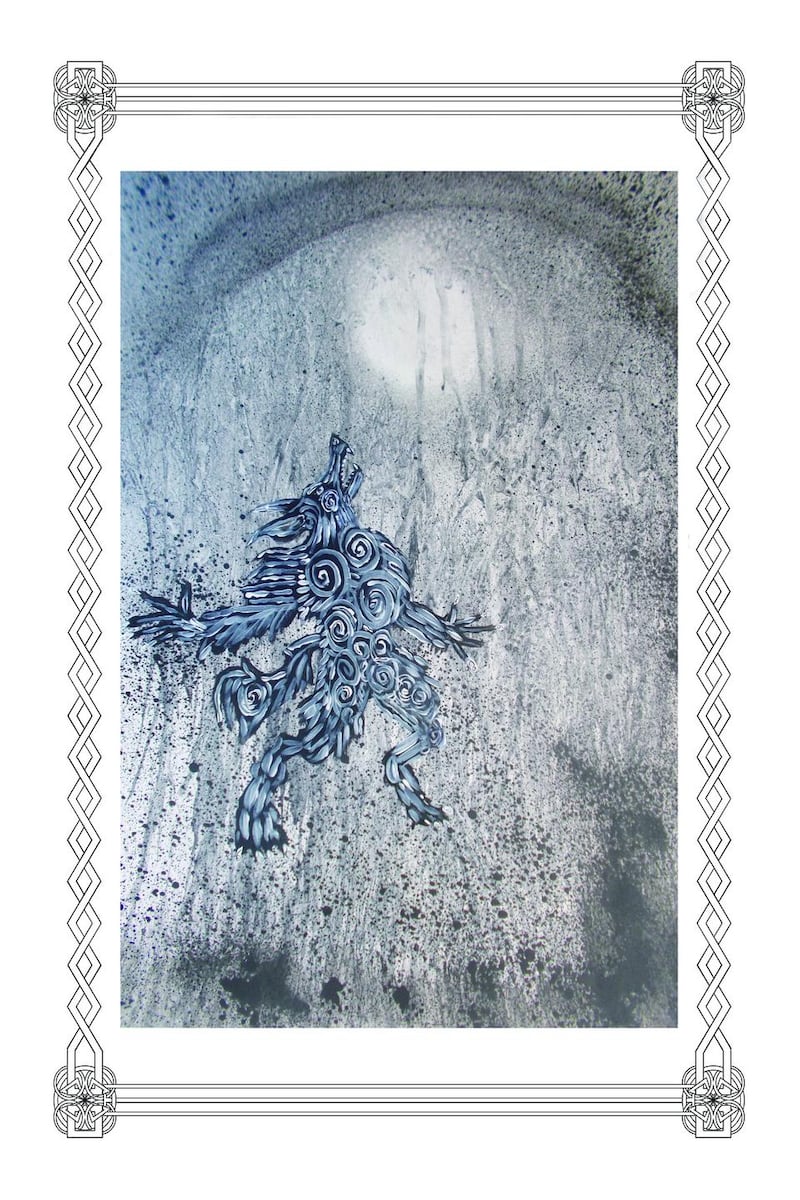
But there are softer ways to outwit the fairies. One is if you are lost in a fairy fort or fairy ring you take your coat off, put it back on inside out, put your left shoe on your right foot and spin around three times… if you do this you will find your way out of the fort or ring. The reason for this is that the fairies fear madness for they believe that it is contagious. (This was told to me by fellow storyteller and folklorist Francis McCurran). In fact all the knowledge we have today about the Sidhe has been passed down by storytellers going back centuries when the written word and literacy was only for the privileged classes and stories existed through the oral tradition.
The Sidhe are not unlike ourselves in many ways for they also fall in love but they also fall out with each other. They have been known to have great battles with other Sidhe from the various provinces and counties. They have even been known to have hurling matches to settle their differences. In Eamon Kelly’s beautiful fairy story The Golden Ball there is a brief description of one of these fairy hurling matches.
As a storyteller myself, I have had the privilege and a pleasure to work with other storytellers and hear their tales of the Sidhe. It has been particularly fascinating to hear firsthand accounts of experiences that people have had with The Other Crowd. Paula and I have spoken to folklorists, musicians, religious people, academics, artists, poets, farmers, fishermen, mountain folk, storytellers and characters from every background imaginable with regard to this book.
It was through storytelling that I and Paula first met. She has always had a keen interest in what lies beyond the ethereal wall that separates our world from theirs. Since Paula was a young child living beside the mountains she would sit and wait for the fairies to come and keep her company.
Her brothers were older than her and as she lived in an isolated area there were not kids her age to play with. As a result her imagination was her playground, Paula had a powerful imagination from a young age and this helped her songwriting in later years. Paula would sit in her garden wishing and hoping the fairies would come and visit her. Although she has never seen one she felt a powerful connection and belief towards them. As she grew older her connection to the fairies did not fade and this caused many people to think she herself was away with the fairies.
But she remained true to her belief and very much an individual. It quickly became apparent as she got older that not many share her belief in fairies, yet when she asked those people if they would cut down a fairy tree they would always reply “No way!”
Paula’s love of storytelling did not come out of nowhere for her cousin was the late great John Campbell, one of Ireland’s most celebrated storytellers. His son John Campbell jnr was headmaster at Forkhill Primary School where Paula was a pupil.
When Paula and I met, we shared our belief in the Sidhe and this is a bond we feel is powerful and sometimes more powerful than ourselves. Writing this book has been a wonderful experience but has also had many drawbacks for we feel the fairies interfered with our plans on several occasions and did not make this journey easy for us, both as story collectors or as a couple, for we feel many times the fairies have tested our faith, in both them and in each other.

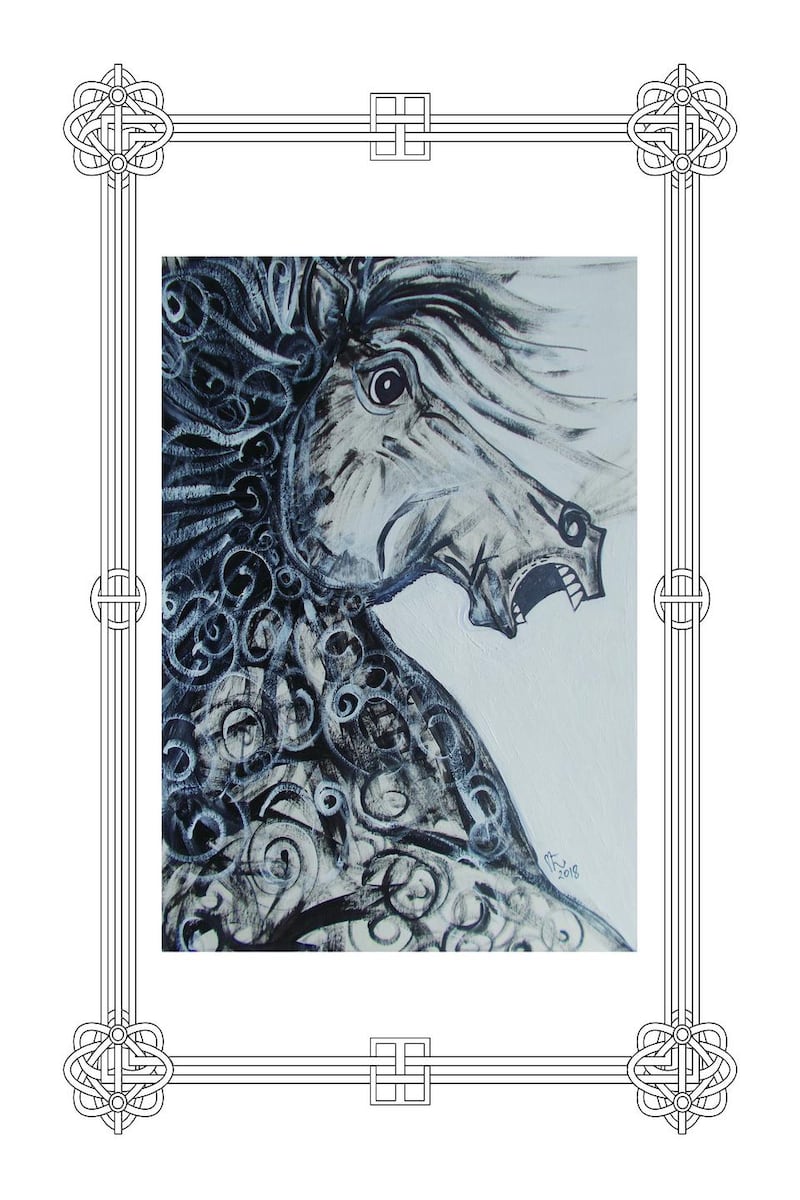
During the writing of this book huge obstacles were put in our way to see if we would falter or give up. Initially we found it difficult to get people to share their experiences with us. We found this very interesting and disturbing as many individuals even in the 21st century still talk of the Sidhe in hushed tones, for fear of being heard and quite possibly punished. It is for this reason that the Sidhe are often referred to as The Good People or The Gentle People, so that they will not take offence or umbrage if they hear mortals speaking of them. Some folk did not want to speak of them at all and it proved quite difficult to gather stories from each county.
At two crucial stages in this process we lost all our work due to computer problems. We managed to recover most of it but some of the material had to be rewritten and redocumented. In the early stages all of Paula’s research was wiped from her iPad. The camera that I used to document my illustrations for the book completely packed in and a new camera had to be purchased.
Paula had lots of sleepless nights and bad dreams while writing this book and at a few stages questioned if we should keep going. She felt for a time that maybe the fairies were telling us not to write the book, and we were involving ourselves in something that we really do not understand. I had read and heard of accounts of individuals being sabotaged by the fairies whilst trying to get close to them and I was beginning to think it was a bad idea myself.
But after consulting some folk who are lucky enough to have met the Fey, they assured us the fairy folk would want us to write this book and they want the people of Ireland to know about them, and it’s natural and important to fear them but it’s much more important to respect them. It is also true that anything worthwhile is never easy.
These are only a few examples of the struggles we faced while writing this book. We believe the fairies were testing our belief to see if we were serious, and maybe to see our motives for writing a book about them. We did not give up despite everything that was put in our way, we still believe in the fairies and each other and maybe even more than ever. Our belief in them and each other has become stronger as a result of writing this book.
People often snigger when they hear the word fairy. Yet time and time again when asked "Would you cut down a fairy tree?" the answer is always "No!"
After collecting the stories another large part of the procedure was creating the artwork depicting the Sidhe, I created a set of illustrations from what we heard and the various descriptions that were given to us. It was indeed exciting, trying to imagine the Sidhe and their world visually. And to help us with this process was another journeyman who helped us on our expedition in the fairy realm, my old art college friend James Patrick Ryan. He was a wonderful support throughout this project. He created a set of wonderful coats of arms, one for each county, and a series of ornate borders that pay tribute to the plates of the great master of fairy illustration Arthur Rackham.
James, a native of Co Limerick, provided us with a chilling fairy story told to him by his grandmother. This story provides the chapter for Co. Limerick complemented by his own illustration.
While we were researching the book, Paula and I found that not everyone is a believer in the Good Folk, and there was a bit of scepticism.
People often snigger when they hear the word fairy. Yet time and time again when asked “Would you cut down a fairy tree?” the answer is always “No!”
Business tycoons in Ireland have been left penniless and the planning of motorways have been interrupted and every time fingers have been pointed towards the fairies.
In 1992, Cavan business man Sean Quinn’s lost his multibillion-euro fortune and it was believed that the reason was down to a fairy curse known as a pishogue. He gave the go-ahead for a 4,000-year-old megalithic burial tomb to be relocated to make way for a quarry for Quinn Concrete.
If you grew up in Ireland you would have heard people talk about fairy trees and forts and most people wouldn't dream of messing with them
In the North of Ireland one of the slip roads off the motorway from Ballymena to Antrim was built around a fairy thorn because locals didn’t want to see it cut down. In the west of Ireland, the Ennis bypass in Co Clare was also re-routed to avoid disturbing a lone hawthorn tree. The hawthorn tree is native to Ireland and believed to be the dwelling places and watchtowers of the fairy folk. This campaign was led by storyteller Eddie Lenihan. Eddie is a true believer and a voice for the fairies.
If you grew up in Ireland you would have heard people talk about fairy trees and forts and most people wouldn’t dream of messing with them. There are far too many stories about the ill fate people have met as a result of tampering with such things, to simply write it off as mere coincidence.
Although all the stories came from the oral tradition and were often passed down by ordinary folk, many of whom were illiterate, fairy stories were a big part of the world of literature and academia.
In his book The Green Fool (1938), Patrick Kavanagh admitted that he was taken by the fairies when he was a young man, Flann O’Brien referenced the Good Folk in his first novel At Swim-Two-Birds (1939) and WB Yeats was also a great believer.
My own father Pat Lally was a scientist and often told me that not everything can be explained through science, and there are many things that we as humans simply cannot comprehend.
Our aim was to find the best stories from each county and we hope we have done just that. We feel it is important to preserve these stories and share them with everyone. It was massively important for us to represent the 32 counties of this island.
We have always felt the Good Folk brought us together. And we hope you will enjoy reading the stories as much as we did collecting them. We feel it important to say that they are believers. Just because we don’t see fairies doesn’t mean they don’t exist. We believe in fairies like the next person believes in God, angels or miracles. What’s the difference?
Paula and I feel it’s important to respect the land and our ancient monuments and tombs. We have established that in the 21st century people still very much believe in the fairy folk.
Irish Gothic is published by the History Press. Steve and Paula will be performing as The Bard and the Banshee in Hodges Figgis Bookshop, 56-58 Dawson St, Dublin, on Wednesday, March 6th, at 6 pm. Steve will be telling a selection of stories from the book and Paula will be singing some old ballads.
